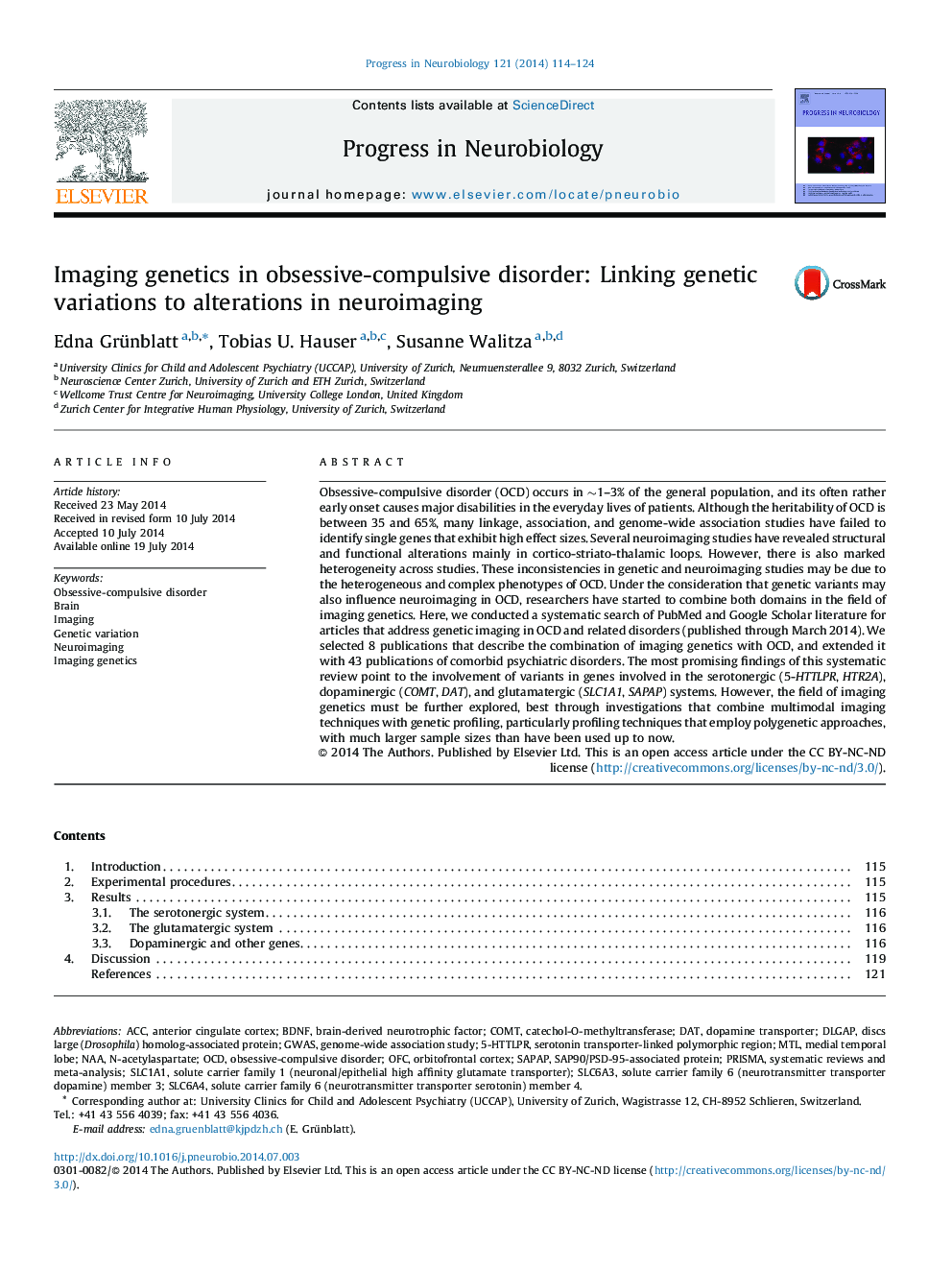| Article ID | Journal | Published Year | Pages | File Type |
|---|---|---|---|---|
| 6286487 | Progress in Neurobiology | 2014 | 11 Pages |
Abstract
Obsessive-compulsive disorder (OCD) occurs in â¼1-3% of the general population, and its often rather early onset causes major disabilities in the everyday lives of patients. Although the heritability of OCD is between 35 and 65%, many linkage, association, and genome-wide association studies have failed to identify single genes that exhibit high effect sizes. Several neuroimaging studies have revealed structural and functional alterations mainly in cortico-striato-thalamic loops. However, there is also marked heterogeneity across studies. These inconsistencies in genetic and neuroimaging studies may be due to the heterogeneous and complex phenotypes of OCD. Under the consideration that genetic variants may also influence neuroimaging in OCD, researchers have started to combine both domains in the field of imaging genetics. Here, we conducted a systematic search of PubMed and Google Scholar literature for articles that address genetic imaging in OCD and related disorders (published through March 2014). We selected 8 publications that describe the combination of imaging genetics with OCD, and extended it with 43 publications of comorbid psychiatric disorders. The most promising findings of this systematic review point to the involvement of variants in genes involved in the serotonergic (5-HTTLPR, HTR2A), dopaminergic (COMT, DAT), and glutamatergic (SLC1A1, SAPAP) systems. However, the field of imaging genetics must be further explored, best through investigations that combine multimodal imaging techniques with genetic profiling, particularly profiling techniques that employ polygenetic approaches, with much larger sample sizes than have been used up to now.
Keywords
COMTSAPAPSLC6A3SLC1A1SLC6A4OCD5-HTTLPRN-acetylaspartateOFCACCPRISMACatechol-O-methyltransferaseDATMTLNaABDNFobsessive-compulsive disorderDopamine transporterImagingNeuroimagingGenetic variationBrain-derived neurotrophic factororbitofrontal cortexanterior cingulate cortexMedial temporal lobeGenome-wide association studyGWASBrainserotonin transporter-linked polymorphic regionImaging genetics
Related Topics
Life Sciences
Neuroscience
Neuroscience (General)
Authors
Edna Grünblatt, Tobias U. Hauser, Susanne Walitza,
